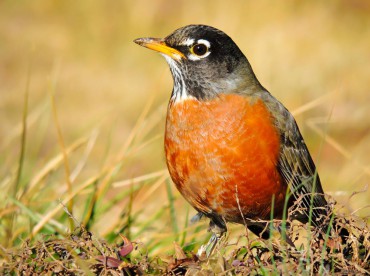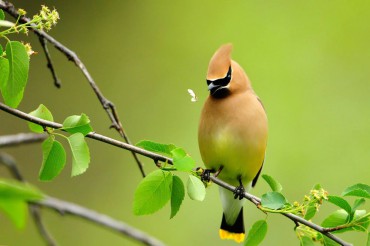
From late summer into early fall, the wild bird population reaches its highest numbers for the year. This year’s young account for the increase. The population boom coincides with nature’s fall abundance.
Many birds, including this year’s young, won’t survive the winter. Their survival depends on the natural food supply.
During the fall migration, hundreds of thousands of birds (in some cases millions) move down the West Coast. They are headed for warmer climates and their migration routes can cover thousands of miles. From turkey vultures to Western tanagers, they make fall bird watching exciting.
As State Route 3 passes through Silverdale toward Bremerton and southward, it’s not only a freeway for passenger vehicles. Migrating birds use this established route and one of the easiest to see is the turkey vulture. Hundreds of them travel from Alaska and British Columbia through Kitsap County and much of Washington. They are headed for California and Mexico.
Vultures travel in upward spiraling groups known as “kettles.” When seen following the freeway, these whirling bunches of large, black birds are fascinating to watch.
Other migrating birds travel at night because it is safer. Raptors that prey on songbirds are less likely to be hunting when it is dark. Owls are an exception but their numbers are much smaller than the hawks that pass through during migration. Nighttime migrants account for those sudden surprises that just appear one morning.

During migration, cedar waxwings travel in large flocks and many of them are this year’s young. Waxwings can’t resist ripening dogwood buttons. When they are feeding in the trees, the buttons’ seed kernels fall to the ground like rain. They are equally fond of wild blackberries and when these gregarious birds are delving into the thickest of blackberry brambles, their soft whispering is a way for the flock to keep track of one another.
Mountain ash berries top the favorites list of several bird species that follow the ripening fruit. Robins that nested in Alaska consider the Pacific Northwest their “south.” They move throughout West Sound and other parts of Western Washington while dining on berries, worms and bugs. Their passion for mountain ash berries can lead to some bizarre behavior.
Several parks and college campuses use this tree in their landscaping. The large crops this can produce may not be eaten in a day or two. Mountain ash berries, like other fruit, will ferment. This doesn’t slow the robins’ appetite for them. Perhaps it encourages them to keep eating when they should stop.
Drunk robins resemble some humans when they over-imbibe. A “falling down drunk robin” does get your attention. They become argumentative and unsteady on their feet. They have even caused concern by passing out. Onlookers wonder if they have been poisoned on “something.”
Some birds (and mammals) hoard food when there is more than enough to eat in a few days. If the wild hazelnut bushes are weighted down with nuts, arguments often occur. Steller’s jays can’t tolerate anyone else sharing in the bounty, especially squirrels. Mark Twain once remarked on a jay’s talent for swearing. When a jay spots a squirrel gathering the hazelnuts, you understand his remark.
Washington’s state bird is the American goldfinch and when migrating flocks of these golden birds descend on an area, it’s one more autumn treat. They visit yards where feeders are full of black sunflower seeds or black thistle, but they also brighten the fields and wetlands where the native thistles can be found in abundance.
One fall crop that usually isn’t considered wild or naturally occurring is the apple tree. Where the crop is left hanging on the trees, the birds take advantage of it. Pileated woodpeckers, the state’s largest member of the family, love apples.
Another woodpecker, the red-breasted sapsucker, is also attracted to apple trees. It doesn’t eat the fruit but it drills holes in the tree trunks. These are “wells” and they fill up with sap the sapsuckers sip. Insects congregate around these wells and insect-eating birds like the nuthatches dine on them.
Nature’s bounty is found in many places, especially at this time of the year. The birds attracted by this abundance could be considered a fall bounty for birdwatchers as well.























Comments